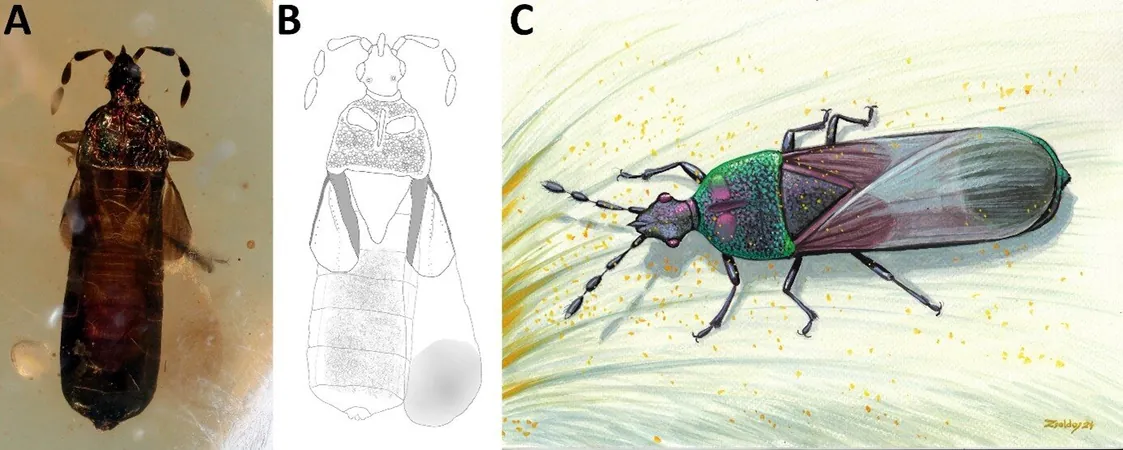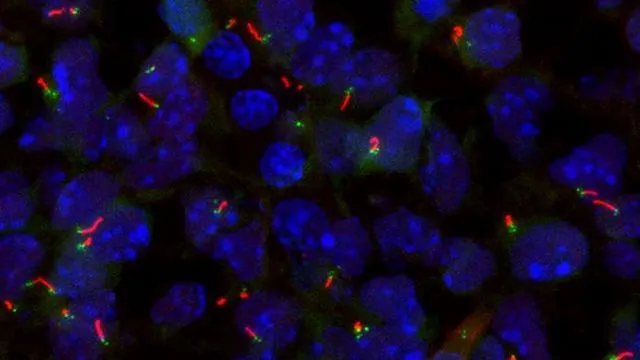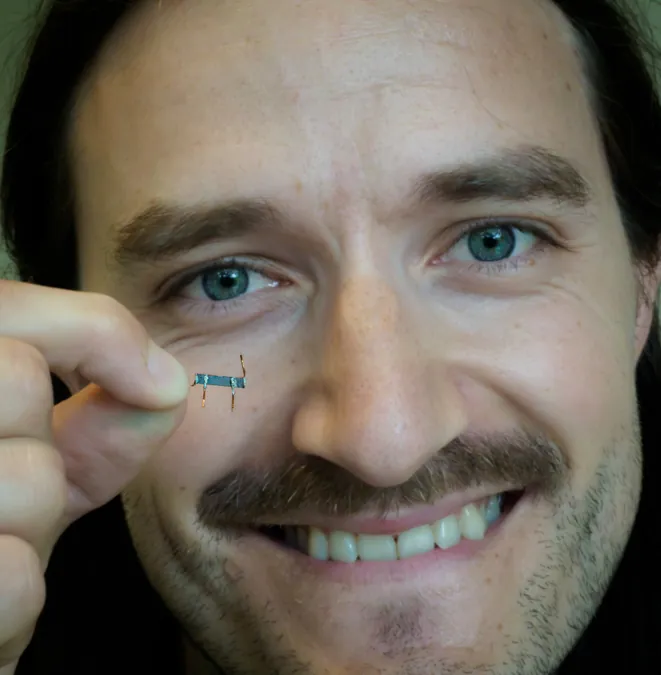
Ancient Iridescent Bug Found in Amber: A Surprising Pollinator from 99 Million Years Ago!
2025-09-04
Author: Nur
Did Bugs Once Rule the Pollination Scene?
When we picture pollinating insects, we naturally think of bees, butterflies, and flies. But what if ancient bugs were just as critical to the floral kingdom? A fascinating discovery by a Hungarian research team suggests that true bugs may have been important pollinators long before the rise of modern insects!
A Glimpse into the Past: The Role of Amber in Science
Published in the journal *Scientific Reports*, this study reveals the power of ancient amber in unveiling the mysteries of biodiversity through time. Fossils, especially of arthropods, often lack detail unless preserved within fossilized resin, offering a snapshot of life millions of years ago.
Unearthing Secrets from Burmese Amber
One of the most remarkable amber deposits dates back to the Late Cretaceous period—about 99 million years ago—from what's now Myanmar. This amber, known as Burmese amber, captured wildlife that evolved in isolation after breaking away from the supercontinent Gondwana, resulting in a unique mix of flora and fauna.
Meet Shaykayatcoris michalskii!
During their research, Péter Kóbor and Márton Szabó stumbled upon a flat bug belonging to the Aradidae family, specifically the Prosympiestinae subfamily. This extraordinary find represents the first of its kind discovered in Burmese amber! Unlike previous specimens, which belonged to more evolved groups, this bug carries ancient traits—and a stunning iridescent exoskeleton that’s a first for its family.
The Mysterious Allure of Iridescence
Though iridescence is often seen in various bug species, it’s especially rare among cryptic groups like flat bugs. These insects typically dwell beneath tree bark, munching on fungal hyphae, thanks to their flattened bodies and specialized mouthparts. The newly discovered Prosympiestinae, however, shows a different lifestyle; its cylindrical body favors habitats like leaf litter.
Dual Purpose of Iridescence: Camouflage or Warning?
The iridescent sheen could serve a critical purpose. While bright colors may deter predators (though this bug's brownish hue likely doesn’t), it may primarily act as camouflage, helping it blend seamlessly into flowering environments. What’s truly remarkable is the discovery of pollen grains clinging to its body within amber, hinting that it did indeed visit flowers—suggesting this ancient bug played a role in pollination!
A New Perspective on Evolution
This revelation alters our understanding of pollination dynamics. The evidence implies bugs weren't just bystanders in the plant world but vital players in early pollination, a role many modern bugs have since lost to specialized pollinators like bees. This study not only sheds light on the evolutionary past but also aids in tackling today’s ecological dilemmas and the worrying decline of pollinator populations.
Unlocking Secrets of the Insect World for Tomorrow
Armed with insights from ancient species, we can better navigate current ecological challenges. As we unravel the complexities of insect evolution, perhaps we can find solutions to protect pollinators and ensure the health of our ecosystems today!






 Brasil (PT)
Brasil (PT)
 Canada (EN)
Canada (EN)
 Chile (ES)
Chile (ES)
 Česko (CS)
Česko (CS)
 대한민국 (KO)
대한민국 (KO)
 España (ES)
España (ES)
 France (FR)
France (FR)
 Hong Kong (EN)
Hong Kong (EN)
 Italia (IT)
Italia (IT)
 日本 (JA)
日本 (JA)
 Magyarország (HU)
Magyarország (HU)
 Norge (NO)
Norge (NO)
 Polska (PL)
Polska (PL)
 Schweiz (DE)
Schweiz (DE)
 Singapore (EN)
Singapore (EN)
 Sverige (SV)
Sverige (SV)
 Suomi (FI)
Suomi (FI)
 Türkiye (TR)
Türkiye (TR)
 الإمارات العربية المتحدة (AR)
الإمارات العربية المتحدة (AR)